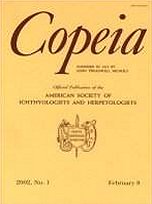Gopher Tortoises (Gopherus polyphemus) are thought to exhibit harem defense polygyny because adult females that are relatively aggregated are thought to receive increased rates of mating visits by large, dominant males relative to females that are more isolated. To examine this expected pattern, we regressed rates of social behaviors on (1) degree of isolation of burrows occupied by female tortoises and (2) degree of isolation of female tortoises. The rate at which other tortoises visited a female was negatively associated with degree of isolation of burrows and females. However, we found no relationship between rates of behaviors associated with reproduction (interactions, courts, and mounts) and degree of isolation of burrows or females. Additionally, there was no association between degree of isolation of females and the number or body mass of males that mounted them. These results indicate that, for large, contiguous populations of Gopher Tortoises in high-quality habitat, such as our study site, distance from neighboring tortoises does not affect mating opportunities of reproductive females. Our findings suggest that patterns of reproduction of Gopher Tortoises conform more closely to expectations of scramble-competition polygyny than to harem defense polygyny.
How to translate text using browser tools
1 December 2003
Mating Opportunities of Female Gopher Tortoises, Gopherus polyphemus, in Relation to Spatial Isolation of Females and Their Burrows
Melissa D. Boglioli,
Craig Guyer,
William K. Michener
ACCESS THE FULL ARTICLE





